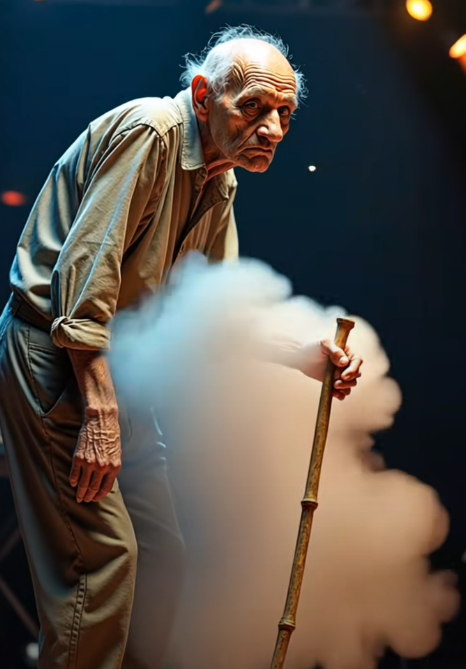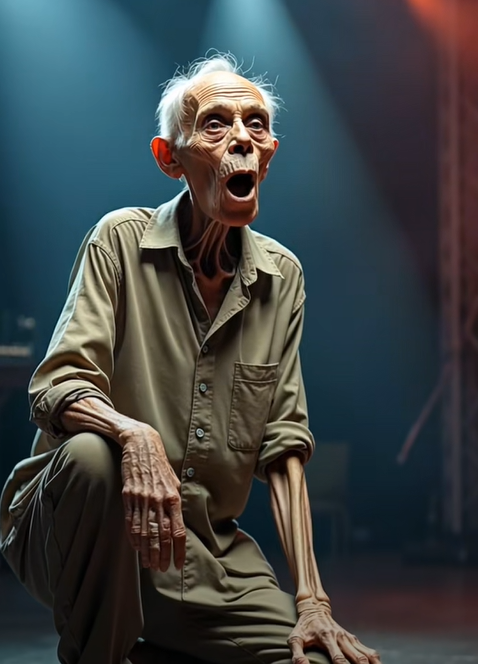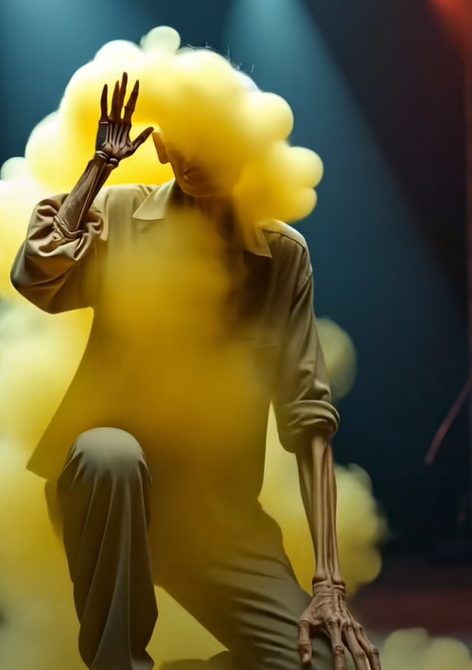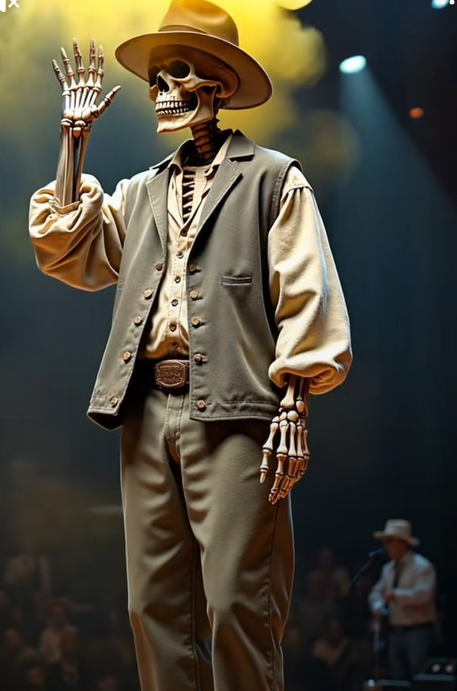The scene opens with a dimly lit stage, where an elderly man enters, hunched over and leaning heavily on a wooden cane.

His frail frame, sunken eyes, and weary posture immediately communicate the passage of time etched into his body.
He walks slowly, each step deliberate, as a cloud of smoke begins to form around him—symbolic of time, memory, and fading life.
A Glimpse Into the Soul
As the smoke thickens, the man pauses and lowers himself, his mouth agape in either awe or horror.

The spotlight intensifies, illuminating his bony hands and the stark lines of his face.
There is a haunting intensity in his expression, as if he is confronting a part of himself—or something far beyond. The audience holds its breath, sensing a pivotal shift.
Dissolving the Flesh
A dramatic cloud of golden smoke engulfs the man. His form begins to fade within it.
Only skeletal hands and a silhouette remain visible through the haze. This is the moment where reality bends—his physical form begins its surreal unraveling.

What once was man is becoming something otherworldly, eternal, stripped of time and flesh.
The Skeleton Emerges
From the thick cloud emerges a towering skeletal figure dressed in the same outfit. The transformation is complete.
The cane is gone, and in its place is a confident wave—a greeting, or perhaps a farewell.
Death is no longer something to fear, but a continuation of the performance.
The skeletal figure stands tall under the stage lights, becoming the final echo of the man we saw before.

A Poetic End
This artistic sequence isn’t merely about aging or death. It’s a meditation on time, transformation, and acceptance.
Through visual storytelling, this performance invites viewers to see mortality not as an end, but as a beautiful evolution—where even in our last act, there is grace, drama, and meaning.
